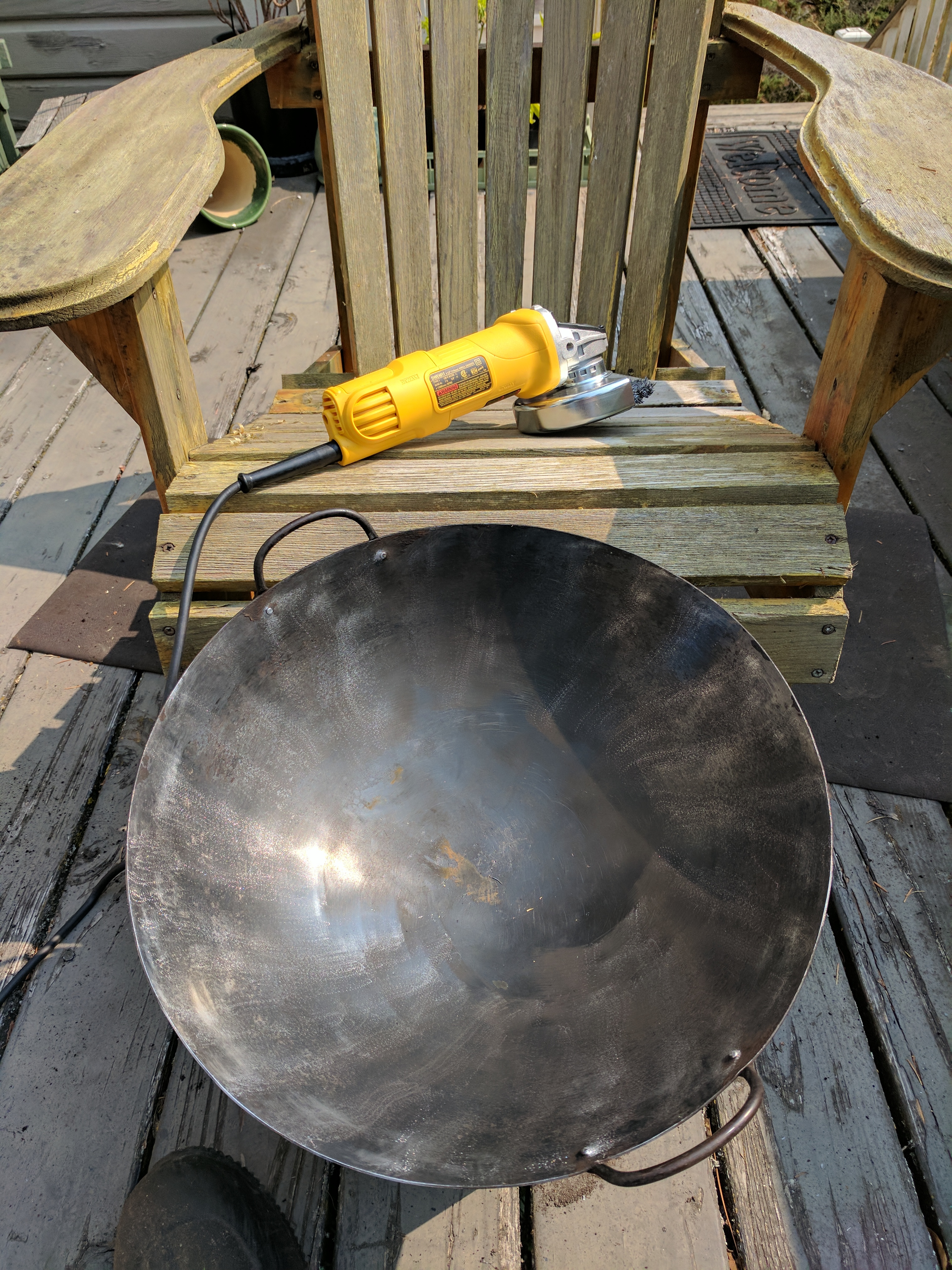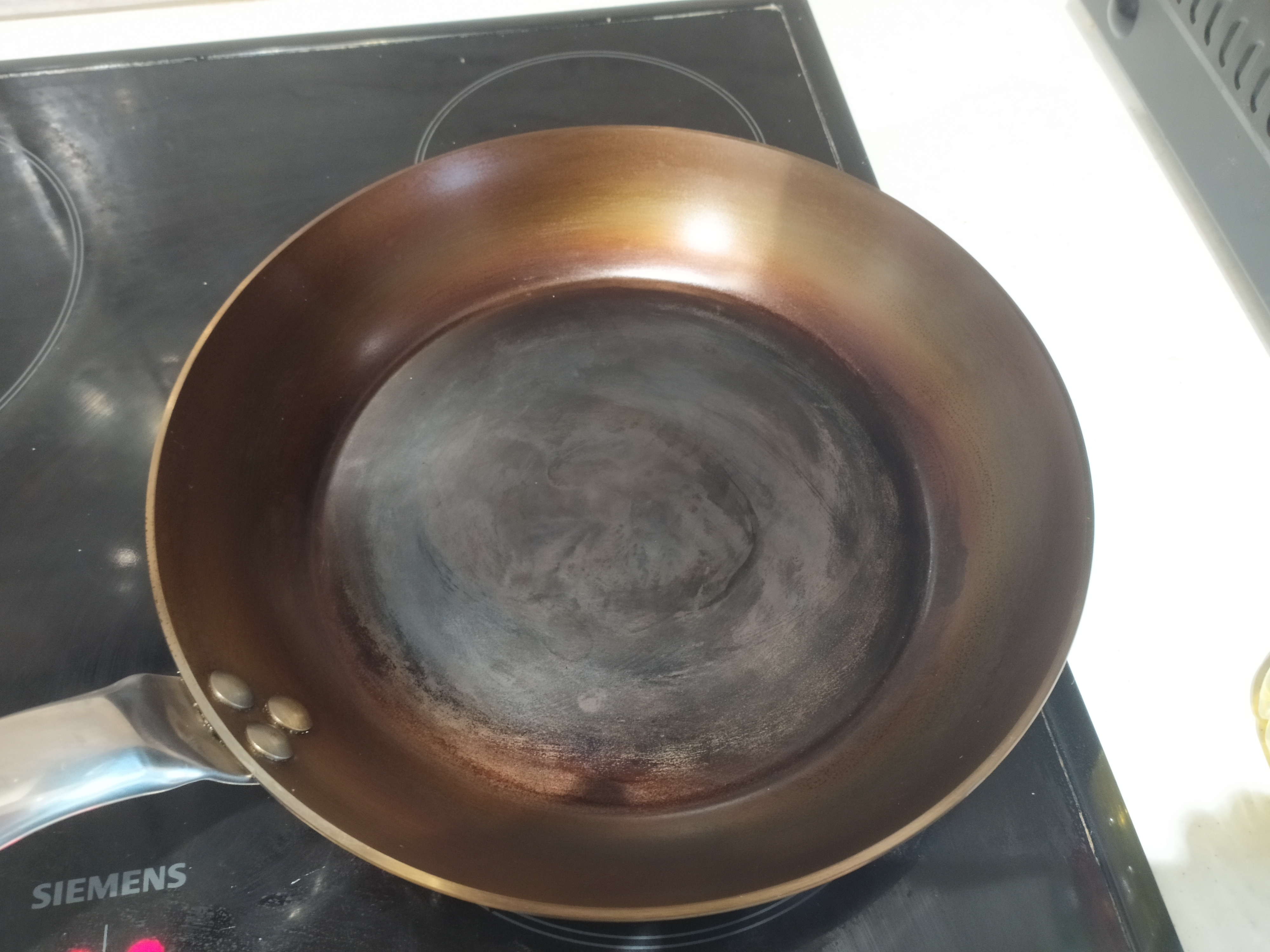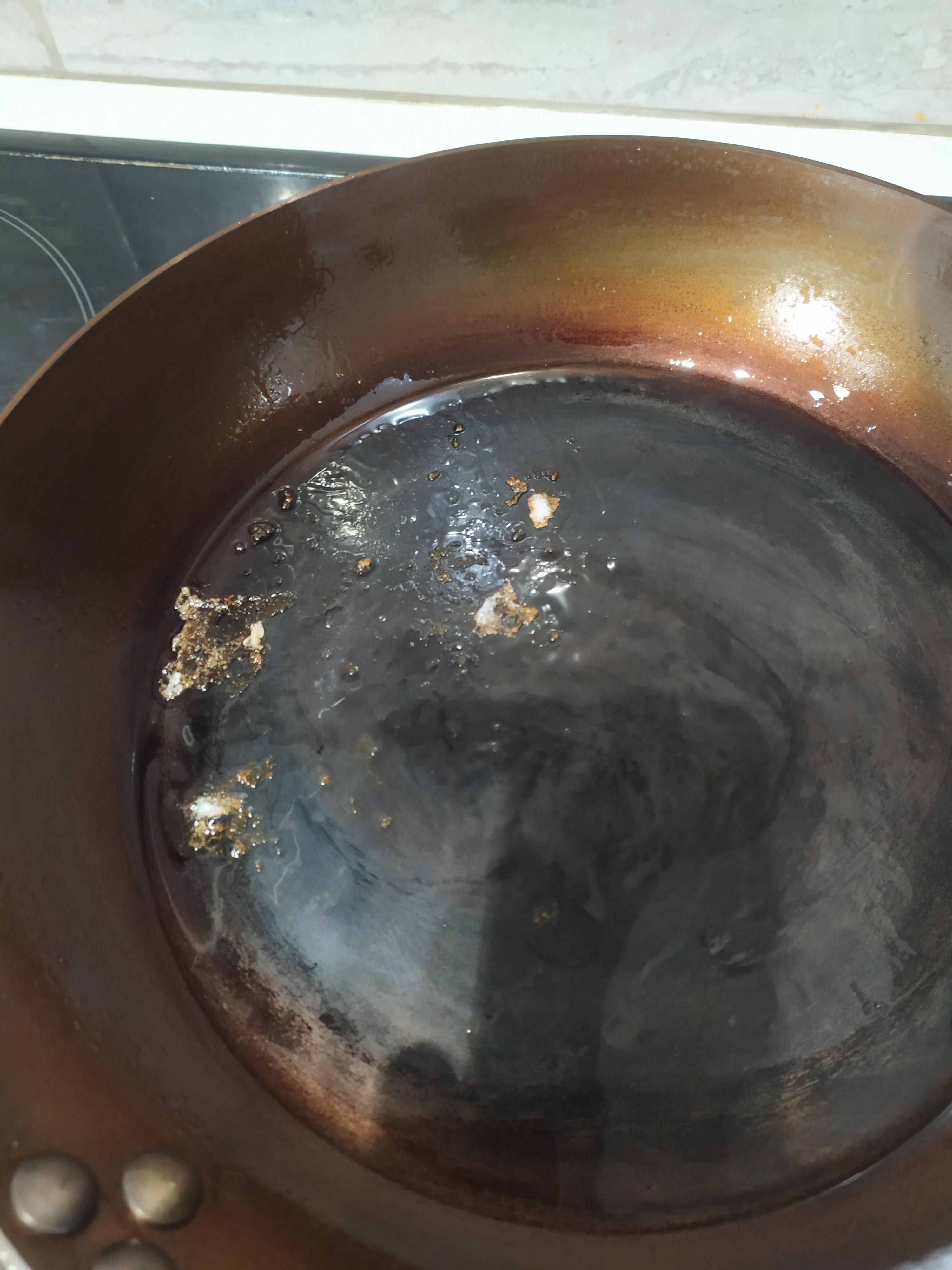Carbon pan arrived yesterday. ...
Is the latter method worth the extra effort?
Yes. THE most critical steps are to get first layers of seasoning on the pan ABSOLUTELY correct.
1. clean.
2. wash.
3. dry.
4. season.
There is no reason this should take very long, either.
There are a couple more sophisticate ways to do each step, but they all have the goal of getting the first layer correct.
As outlined earlier, its useful to "clean" the pan in 3 steps
- remove manufactures coating (follow directions)
- acid wash (boil potato peel)
- 3m pad (green scotchbrite)
The purpose of these 3 steps to to
- remove gross contamination
- remove un-seen residues
- remove oxidation
To put this in perspective, the pan comes from the factory with an anti-corrosion coating (beeswax, etc). This coating will leave residues in the pores or micro-structure of the metal, even if you "Wash it off" (or whatever physical removal method is used). However, this coating is often slightly imperfect and can be scratched somewhat easilty, and thus there can be small-scale oxidation in places where ther OEM coating is "wounded" (including initial attempts are removing it).
You need to do all these steps so the "seasoning" is done on bare steel. Imagin you are repainting a car...you would never paint over anything other than bare metal because the paint wouldn't "bond" correctly...eg you would never pain on top of wax or rust....so all of the "work" of painting a car is preparing the bodywork. The actual painting is easy, but getting a perfect surface is the measure of a good paintjob.
The good news is your new pan is alot easier to prep than a car body work. But you need to keep in mind its a similar process.











